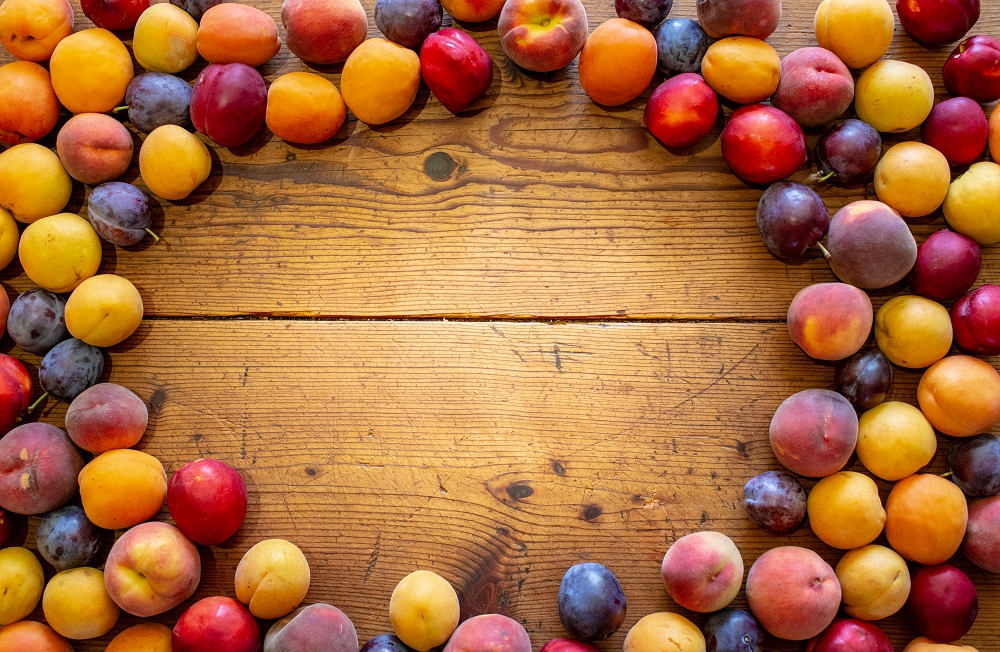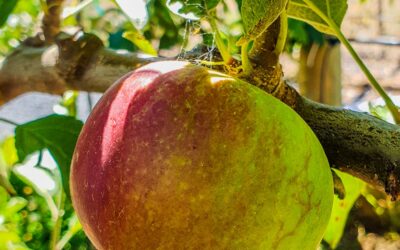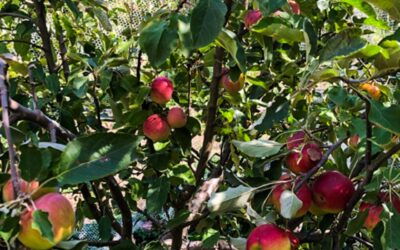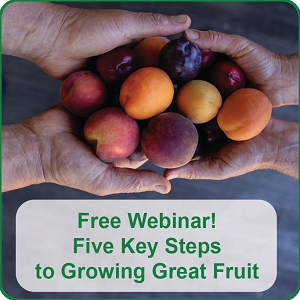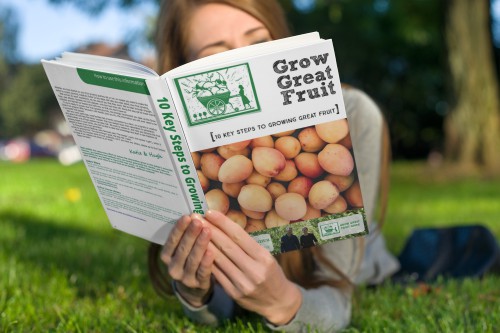Estimated reading time: 6 minutes
For most tree fruit crops, thinning is a key job each spring. In tree fruit, thinning results in four major benefits, but do the same benefits apply to grapes?
The simple answer is that while grapes don’t necessarily need thinning every year, it’s certainly a great tool to have in your skills “toolbox”.
Why thin grapes?
Fruit thinning is one of those important but misunderstood jobs that can make a huge difference to the quality of your crop. It’s also called ‘crop load management’, which gives a big clue as to its main benefit.
Just like thinning tree fruit, thinning grapes is the process of removing some of the grape clusters (or even individual grapes) from the vine. If you do the thinning early in the season, the fruit you leave behind should become bigger, plumper, and sweeter.
It may feel counterintuitive to remove fruit, but it’s a key step to achieving a healthier, higher-quality harvest.
Thinning can also protect the structure of your fruit tree or vine. And if you’ve had disease in your vines, thinning the fruit is a great opportunity to clean up your plants.
What makes grapes grow big?
Some grape varieties tend to be overly fruitful. Left to their own devices, they can produce more fruit than the vine can feasibly ripen.
One of the main benefits of removing some of the fruit clusters from your grapevine is that the remaining fruit will be bigger, plumper, and juicier.
It feels counterintuitive that a vine would produce more fruit than it can easily ripen. Or that they can carry so much fruit that it can cause damage to the plant.
However, that’s because we’re looking at the crop through human eyes. We’re focused on the prize of the perfect, ripe fruit.
From the vine’s (or tree’s) perspective, they’re trying to produce viable seeds to reproduce themselves. The more fruit they produce, in theory, the better chance they have to pass their genes on to the next generation.
The reality is that carrying a large crop can result in reduced vine size and capacity. By thinning, we’re doing our vines a favour!
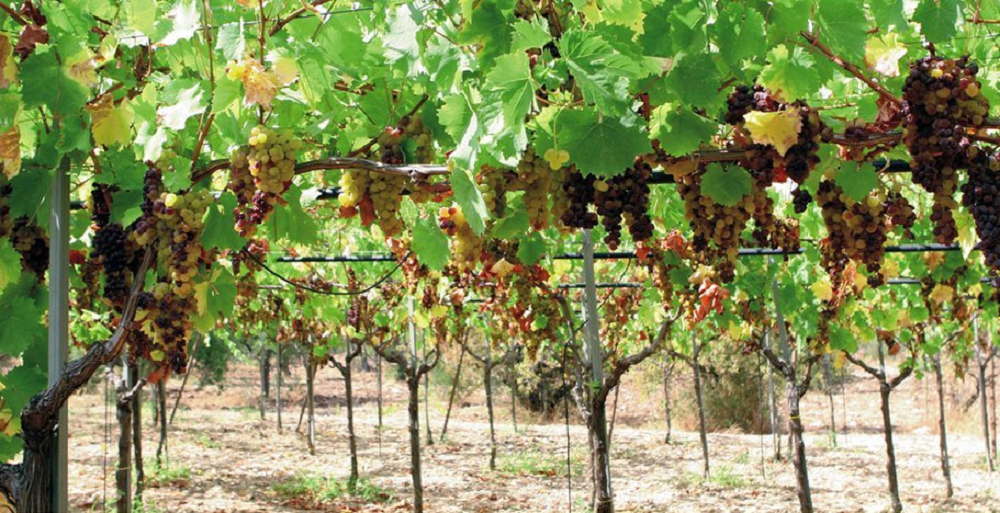
Removing fruit or removing shoots?
Shoot thinning is a common practice in grape growing. This is also called ‘canopy management’. It can help to bring the vines into balance between growing shoots (vegetative growth) and growing fruit.
Shoot thinning is often used to remove unproductive shoots (with no fruit), or to thin shoots out when too many are growing from the same part of the vine.
Sacrifical shoots may also be left on the vine at pruning time, which can then be removed when the crop has set. Removal of the sacrificial shoots combines easy shoot and fruit removal with a single cut, so it can be a very efficient way to improve the crop.
While important, shoot thinning falls more into the pruning category.
When is the best time for grape thinning?
The ideal time to thin grape clusters is in early summer, typically after the fruit has set and small clusters have formed.
You want to thin early enough for the vine to redirect its energy, but not so late that you risk stressing the plant.
Each variety and climate is a bit different, so keep an eye on your grape clusters. Assess your crop load as early as possible, and if you have a very heavy crop consider thinning out some of the fruit.
How much fruit should you remove from your grapevine?
Typically each shoot should be left with just one or two clusters. Remove excess clusters from long shoots, and remove all the clusters from short, weak shoots.
When deciding which clusters to remove, prioritise those that look small, damaged, or overly shaded first. Then, just be thinking about leaving the remaining clusters nicely spread out.
One of the “rules of thumb” that commercial growers sometimes use is the “crop load ratio”.
Aim for a crop load ratio of about 10. This means that vines that average 1kg of pruning wood should be able to produce 10kg of fruit (and 1kg of pruning wood again).
However, this method relies on weighing the wood you remove from your vines from pruning, or at least having a good guess at the weight of the prunings you remove.
This is not a common practice for most home gardeners. Now that you know it has a purpose, think about including this metric in your fruit tree diary.
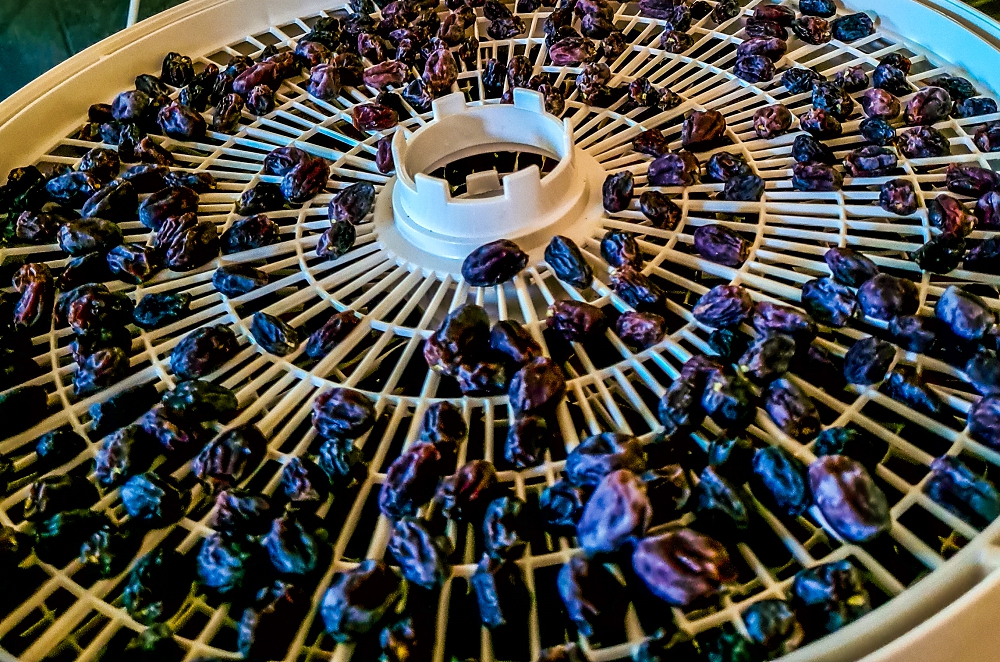
Is there a difference between thinning table grapes and wine grapes?
While different varieties of grapes are grown for eating or wine, thinning tends to have much the same outcome—a smaller crop of better grapes.
Table grape varieties tend to be larger, juicier, and often seedless. The goal of thinning is to grow a good yield every year of large, delicious, sweet grapes.
With wine grapes, it’s all about the flavour and characteristics that the grapes bring to the wine. Wine grapes tend to be smaller, have thicker skins, and are packed with seeds. Wine grapes are often thinned, but in fact you need to be very clear about what you’re trying to achieve to get a good return on the investment of your time and energy.
In wine grapes, the aim of bunch thinning is to reduce the yield. This improves the vine balance (fruit yield to pruning weight ratio). In theory, this will improve fruit quality.
However, to get a good result, thinning must be done before the grapes start to ripen (called veraison). Benefits can include increased sugars *resulting in a more full bodied wine. It can also improve wine colour, phenolics, and other characteristics of the wine.
What are the best grape varieties?
There are thousands of known grape varieties available, but in Australia, the four most common table grapes are:
- Crimson Seedless
- Thompson Seedless
- Menindee Seedless
- Red Globe
However, there’s no need to stick with the common varieties!
We strongly encourage seeking out and growing the lesser known, heritage, and rare varieties. It’s one of the most important ways home growers can preserve and protect food diversity, and therefore food security.

Do ornamental grapes need thinning?
Ornamental grapes do not usually produce fruit, so they don’t need fruit thinning. They do however need pruning.
How much you prune your ornamental grape will depend on its purpose. They’re often used to cover pergolas, for example. In this case, you’ll probably want to encourage the vine to produce plenty of lush, bushy new growth in summer, but prune back hard in winter to allow the sun through.
Related Articles
How to prune your apple tree
Pruning apple trees takes a little more specialist knowledge than other fruit types, but your trees will reward you with ample crops.
How to grow your own multigraft or fruit salad tree
Multigraft trees are a no-brainer for many gardens, as they reduce risk and provide a bigger variety of fruit, without taking up more space.
Saving heritage fruit trees by planting them
Many heritage fruit tree varieties are in danger of going extinct. The best way to save them is by planting them in your backyard.


